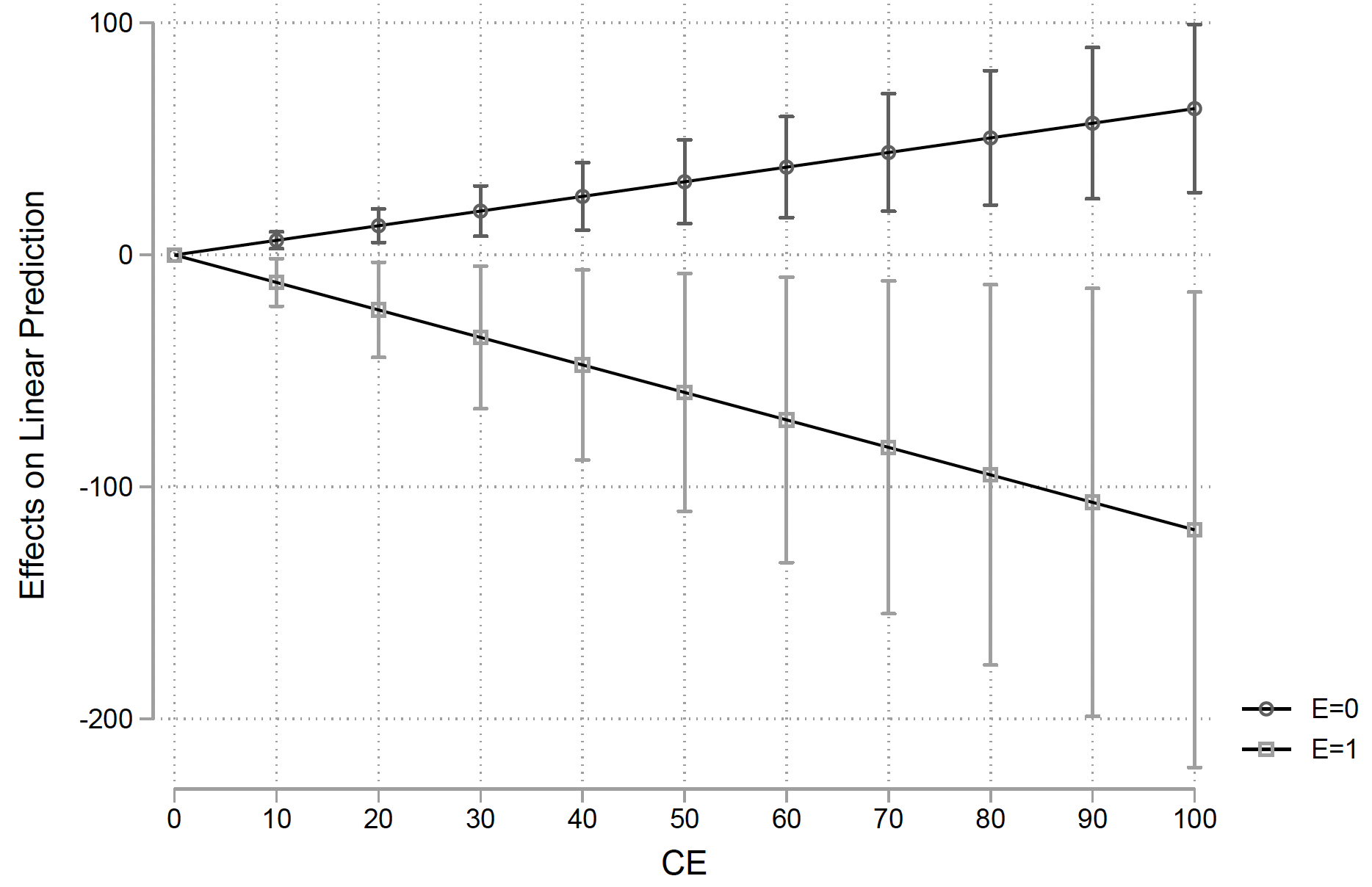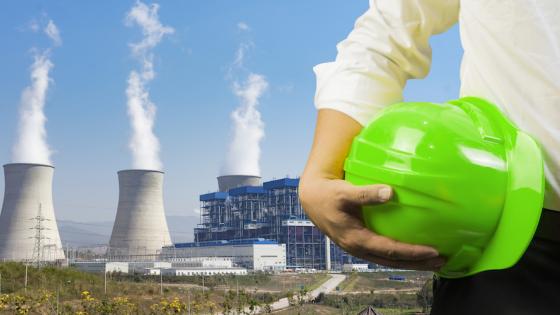A large number of countries, covering about 75% of global carbon emissions, have committed to reaching net-zero by 2050 (UNEP 2021). Meeting these emission reduction goals will require radical climate policies (van der Ploeg and Venables 2023) that redirect financial resources towards sustainable projects and activities (European Commission 2023). Policy actions that raise the cost of capital for firms with relatively higher carbon emissions can play a role in climate change mitigation.
Several studies explore the link between firm-level carbon emissions and stock returns (e.g. Bolton and Kacperczyk 2021a, 2021b, Bauer et al. 2022, Zhang 2023). Yet evidence on how carbon policies affect the cost of capital for high-emission firms is limited. Ramelli et al. (2018) show that investors rewarded emission-intensive companies following the 2016 US election outcome which increased expectations of looser climate policy. Using data from the European Union’s Emission Trading System (EU ETS), Bolton et al. (2022) and Millischer et al. (2022) find that higher carbon prices have a negative effect on stock returns for firms that are short in EU emission allowances and a positive effect for firms that are long in emission allowances. Trinks and Hille (2023) show that the effects of carbon costs on firm performance in terms of sales and profitability are limited and concentrated, possibly because of substantial carbon leakages (Hoogendoorn et al. 2021). Finally, Nerlich et al. (2022) assess the role of central bank action in limiting global warming vis-à-vis carbon tax.
Carbon policies and the cost of capital
In a recent paper (Hengge et al. 2023), we build on this literature to ask how effective carbon policies are in raising the cost of capital for emission-intensive firms. Specifically, we examine how the impact of carbon policies on stock returns varies with company-level carbon emissions. Using firm-level data for a sample of more than 2,000 publicly listed firms across 38 sectors in 23 EU countries and carbon policy surprises (Känzig 2022) over the period 2011–2021, we show that policy announcements which increase carbon prices—positive (tightening) carbon policy surprises—lead to negative abnormal returns. This statistically significant and economically meaningful relationship increases with a firm’s carbon intensity (Figure 1).
Figure 1 Carbon policies and stock returns
Notes: This figure plots the marginal effect of carbon prices on stock returns at various levels of the distribution of carbon emission intensity during non-regulatory event days (the upper line) and regulatory event days (the upper plus the lower line).
Our estimate implies that on regulatory event days, a one standard deviation increase in the carbon price lowers the return of a firm with a median emission intensity by around 2% relative to the average daily return in our sample. We also show that the total effect of carbon policies—beyond the indirect impact through carbon prices—is even larger. This finding suggests that carbon policies are effective in raising the equity cost of capital for carbon-intensive firms.
Profitability versus transition risk
There are two possible mechanisms through which policies that lead to an increase in carbon prices might affect stock returns. The first is a direct cost effect: firms that need to purchase carbon allowances to cover their emissions will face higher production costs. If they are unable to pass on higher costs to their clients, this effect will lead to lower profits and consequently a drop in stock prices. Bolton et al. (2022) and Millischer et al. (2022) show that this mechanism is at play for firms that participate in the EU ETS.
The second mechanism relates to transition risk, which Bolton and Kacperczyk (2021a) define as the “risks associated with the requirement to significantly, and maybe suddenly, curb carbon emissions within a relatively short period of time.” Not only does this risk affect firms that participate in the EU ETS, but policy tightening today could be interpreted as a signal about the projected policy path: future regulation might cover a larger number of firms and sectors. In other words, regulatory tightening today that affects EU ETS firms signals higher carbon transition risk in the future for all firms.
To discriminate between these two hypotheses, we check whether our results are robust to limiting the analysis to sectors that do not participate in the EU ETS. Firms in these sectors are not required to surrender carbon allowances to cover their emissions, and thus do not experience the direct cost impact of higher carbon prices (there could be weaker indirect costs through higher input prices). Since we find that our main results hold even when we focus on sectors that do not participate in the EU ETS, we conclude that transition risk also plays a role in increasing the cost of capital for high-emission firms.
Testing for asymmetries
We also test for the possible presence of asymmetries between positive and negative carbon policy surprises. In other words, we differentiate between days on which the regulatory announcement is tighter than expected and days on which the announcement is looser than expected. While our estimated coefficients are statistically significant in both cases, we find that the effect is about three times larger in magnitude for policy surprises that lead to an increase in carbon prices than for surprises that lead to a decrease in carbon prices. This result indicates that regulatory surprises which lead to an increase in carbon prices are especially effective in raising the equity cost of capital for carbon-intensive firms.
Conclusion
Addressing climate change requires decisive policy actions aimed at reducing carbon emissions. We show that financial markets respond to regulatory policies that increase the cost of carbon emissions. In addition to the direct effect on firms’ profitability, tighter carbon policies likely signal a broader transition towards low-emission activities. We conclude that these policies can play a key role in diverting private investment from high to low-emission activities by increasing the cost of capital for emission-intensive firms.
Authors’ note: The views expressed are those of the authors and do not necessarily represent the views of the IMF, its Executive Board, or IMF management.
References
Bauer, M D, D Huber, G D Rudebusch and O Wilms (2022), “Where is the carbon premium? Global performance of green and brown stocks”, Journal of Climate Finance 1(2022) 100006: 1-15.
Bolton, P and M Kacperczyk (2021a), “Global Pricing of Carbon-Transition Risk”, VoxEU.org, 24 March.
Bolton, P and M Kacperczyk (2021b), “Do Investors Care about Carbon Risk?”, Journal of Financial Economics 142(2): 517–549.
Bolton, P, A Lam and M Muûls (2022), “Do Carbon Prices Affect Stock Returns?”, mimeo, Imperial College.
European Commission (2023), Green Deal Industrial Plan for the Net-Zero Age, February.
Hengge, M, U Panizza and R Varghese (2023), “Carbon Policy Surprises and Stock Returns: Signals from Financial Markets”, CEPR Discussion Paper 17868.
Hoogendoorn, S, A Trinks and J Bollen (2021), “Carbon pricing and relocation: Evidence from Dutch industry”, VoxEU.org,13 July.
Känzig, D (2022), “The Unequal Economic Consequences of Carbon Pricing”, London Business School.
Millischer, L, T Evdokimova and F Oscar (2022), “The Carrot and the Stock: In Search of Stock-Market Incentives for Decarbonization”, IMF Working Paper 22/231.
Nerlich, C, M Ferdinandusse, A Ludwig and R Abiry (2022), “Green QE and carbon pricing: Looking at potential tools to fight climate change”, VoxEU.org, 7 October.
Ramelli, S, A F Wagner, R Zeckhauser and A Ziegler (2018), “Stock price rewards to climate saints and sinners: Evidence from Trump’s election”, VoxEU.org, 29 October.
Trinks, A and E Hille (2023), “Carbon costs hardly harm firms”, VoxEU.org, 9 May.
UNEP (2021), "Addendum to the Emissions Gap Report 2021", United Nations.
Van der Ploeg, F and A Venables (2023), “Radical climate policies”, VoxEU.org, 25 February.
Zhang, S (2023), “Carbon Returns Across the Globe”, Available at SSRN 4378464.






